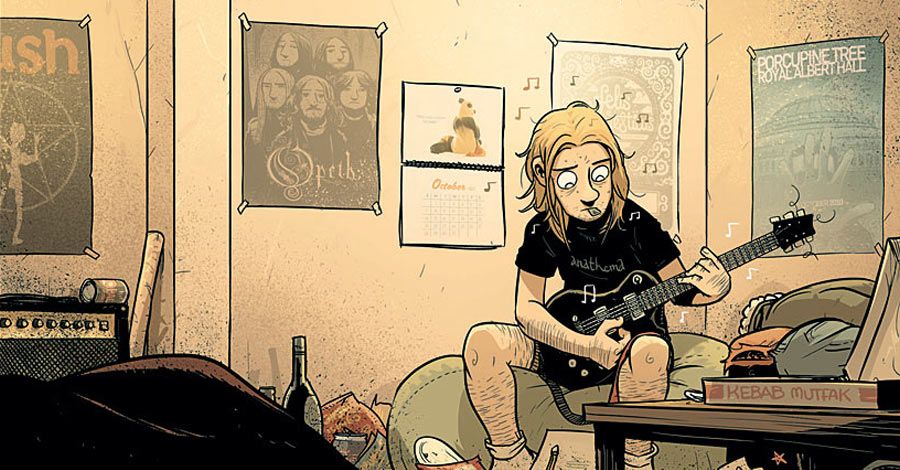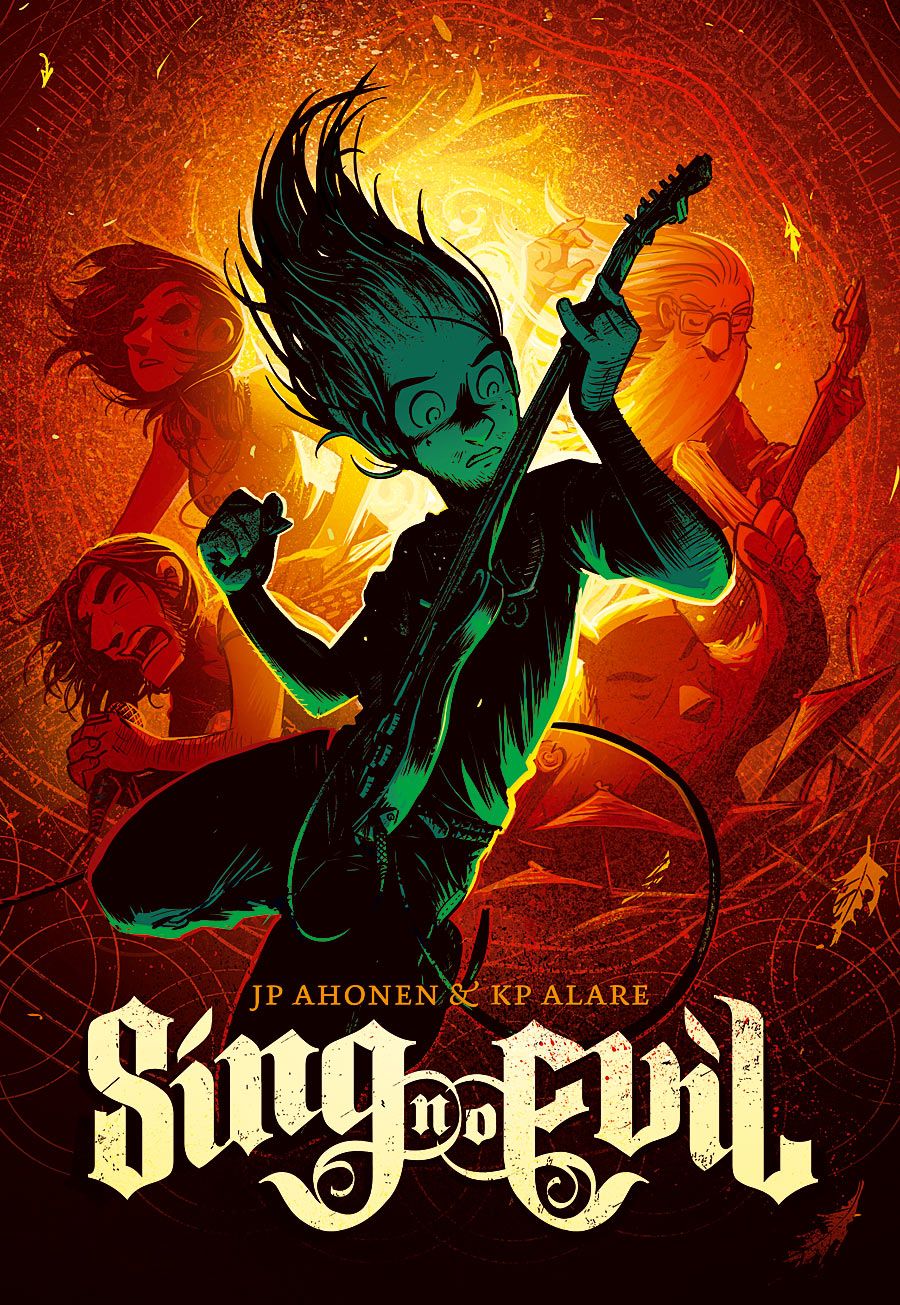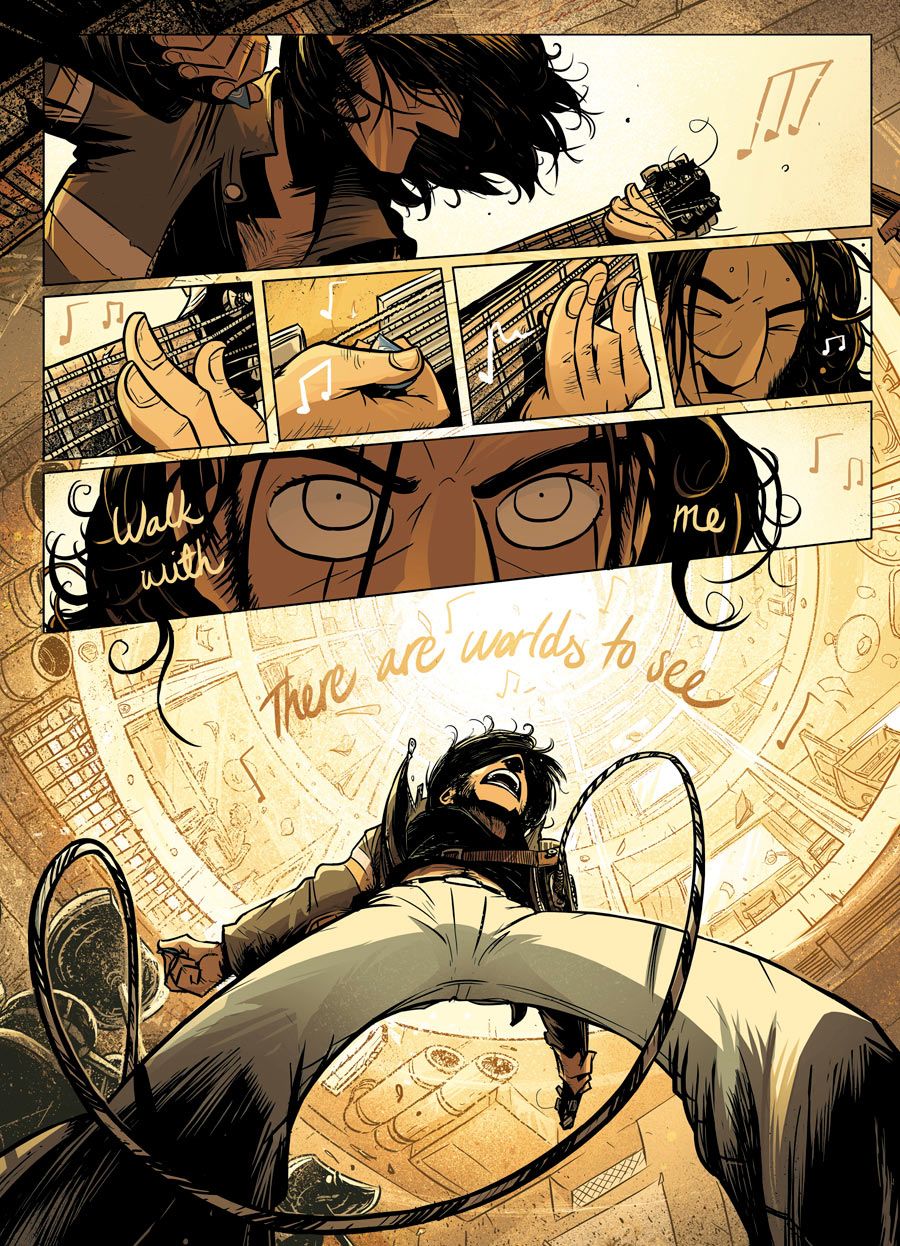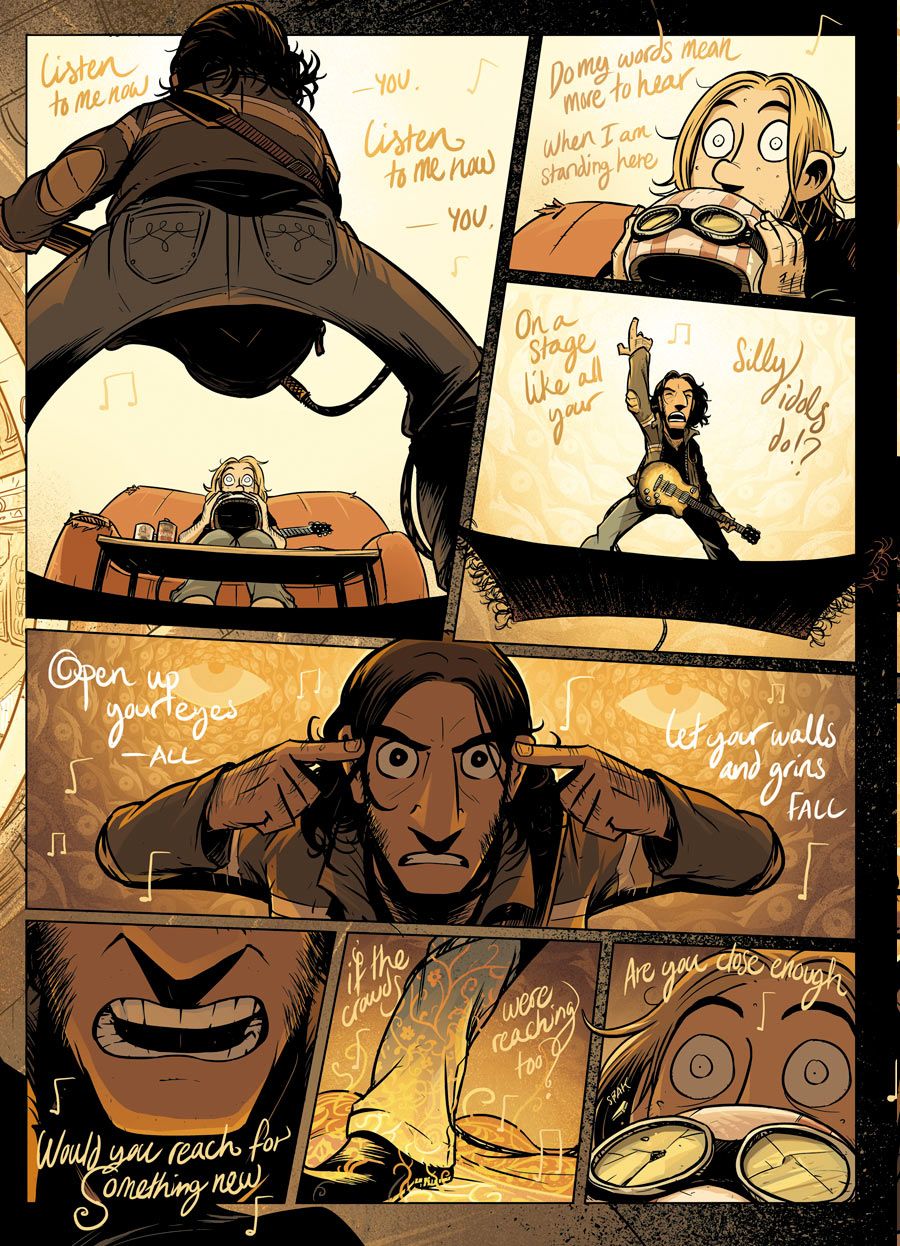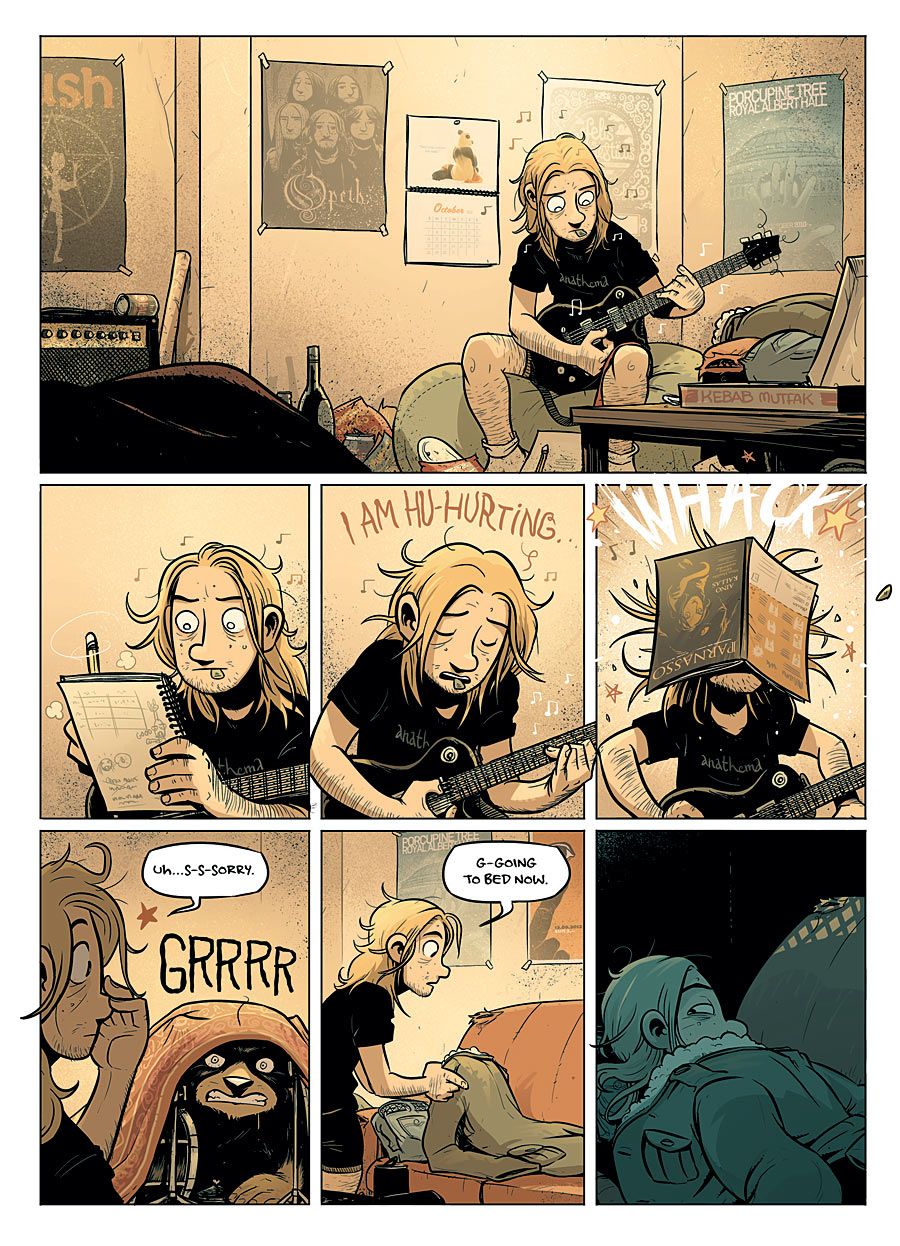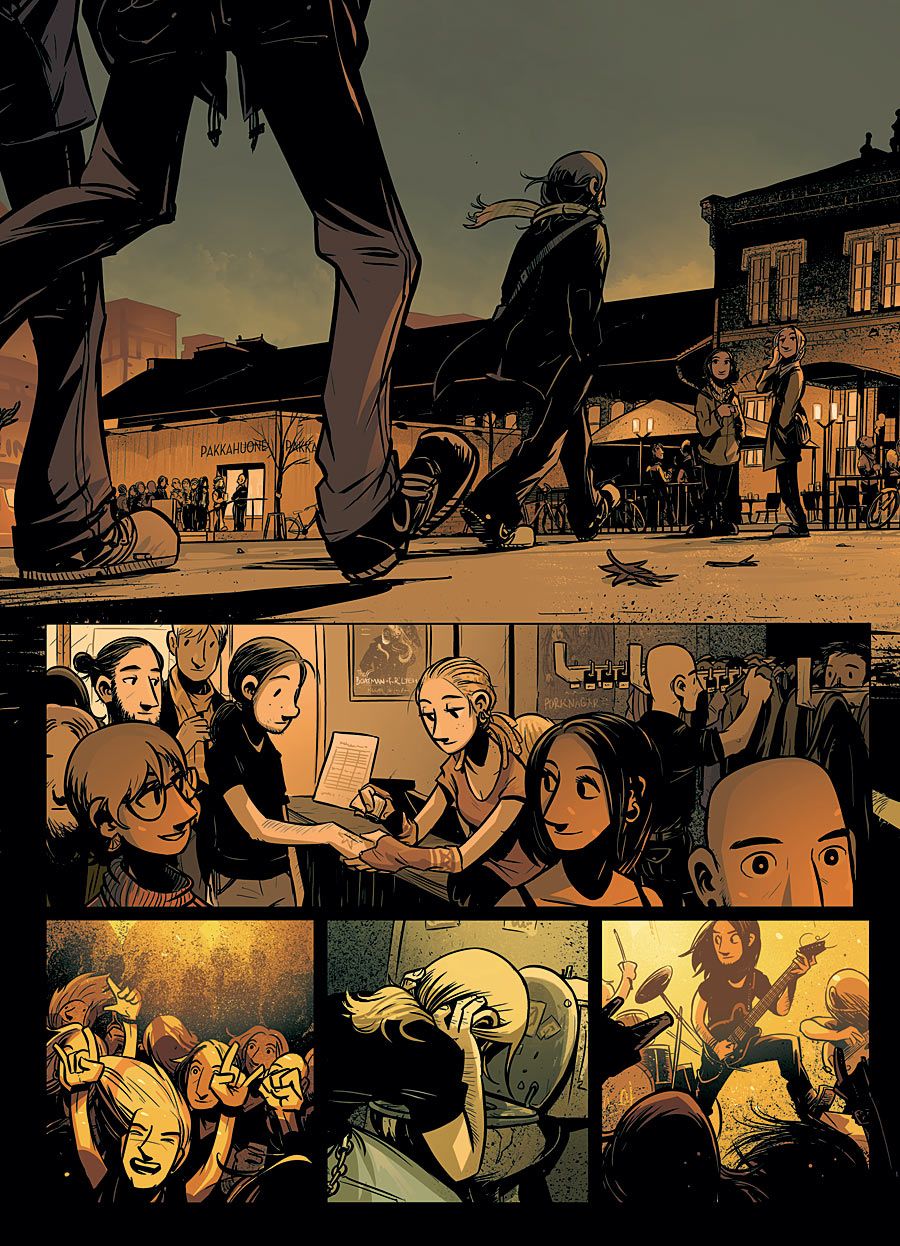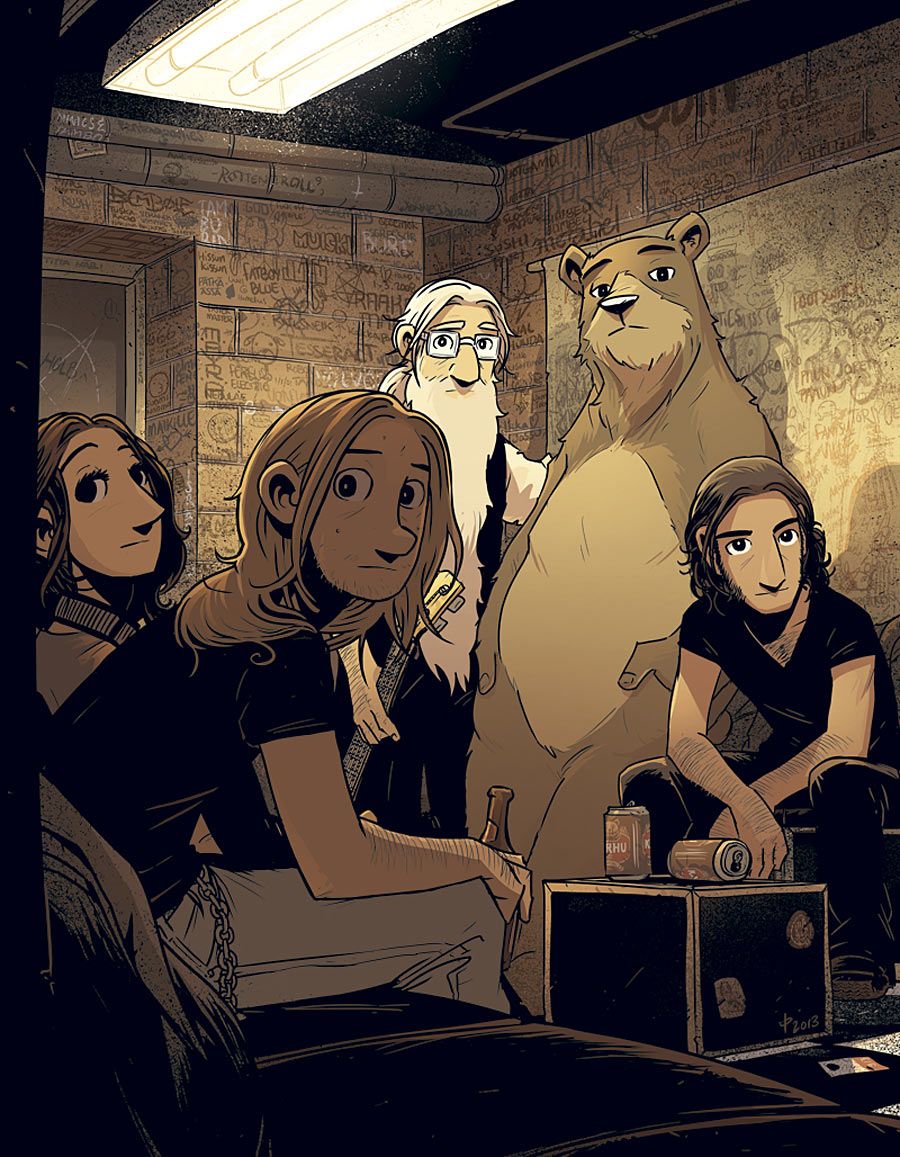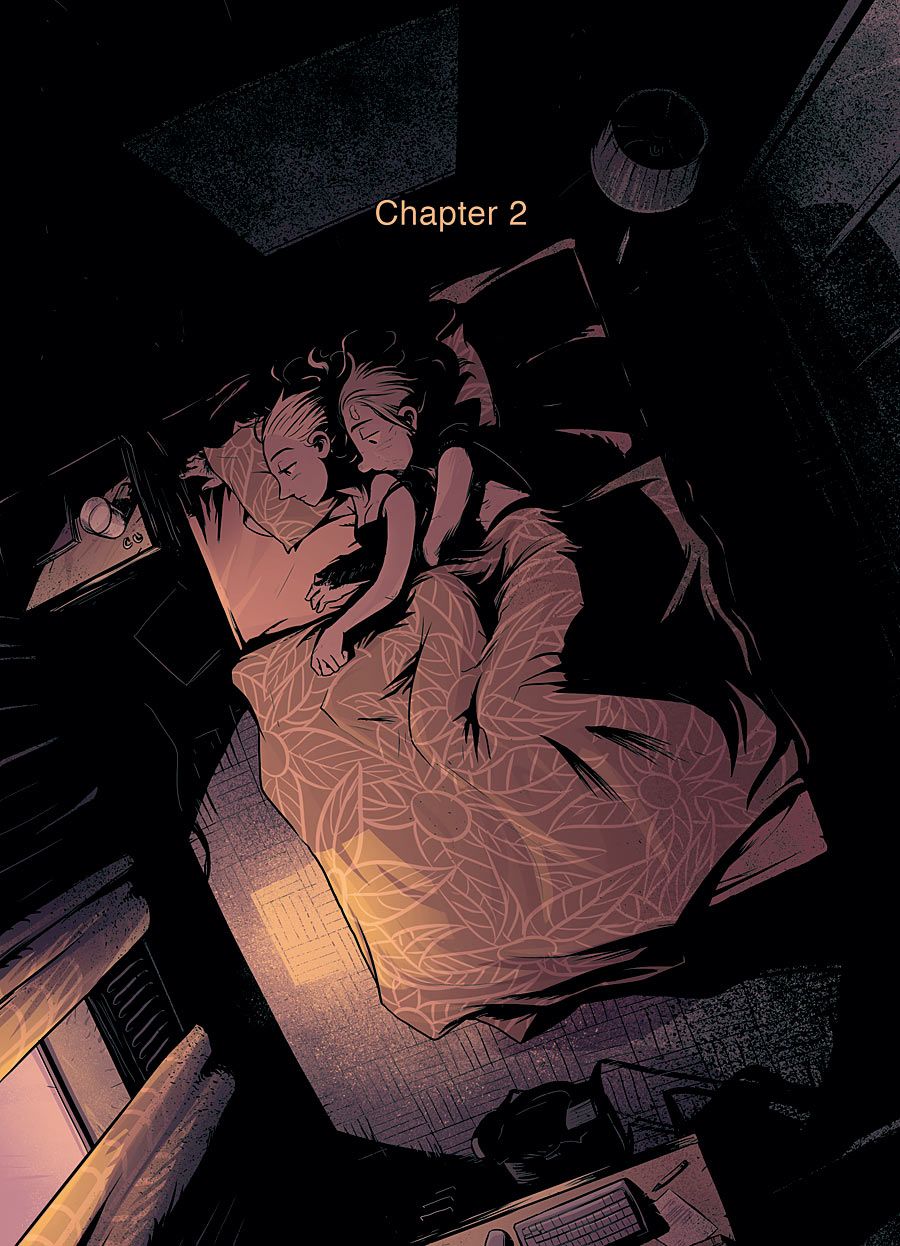"Sing No Evil," the first graphic novel from Finnish creators JP Ahonen and KP Alare, is in stores now in a new English language edition from Abrams ComicArts. The book follows Aksel, an insecure, excessively detail-oriented guitar player and would-be singer, as he attempts to propel his band Perkeros to the next level.
Aksel's real journey, however, is to discover his voice -- metaphorically and vocally. Along the way, he encounters unsupportive friends and booking agents, challenges to his role within the band, wild animals (no, literally, the band's drummer is a bear), and demons from Hell (also, literal).
CBR News reached out to co-creator JP Ahonen to talk a little bit about the book, which was published in its native Finland under the title "Perkeros."
Tell us a little about the genesis of "Sing No Evil." Aksel will, I'm sure, remind many readers of themselves, but was there a particular aspect of his coming of age that you wanted to explore?
JP Ahonen: Obviously the initial idea began brooding thanks to our own interests, way back in 2006. We wanted to do something about our experiences in bands, composing songs and playing music in general, but at the time didn't yet know whether our project would be a graphic novel, a comic strip or a series of single-panel gags -- or something totally different. Making a GN had been a childhood dream, though, so I began pushing the project in that direction. It took me several years to gather enough savings to make the leap, declining freelance illustration gigs and focusing on the book for over one and a half years, just hoping for the best. It's been a long road, but I think time did the project real good.
The actual story includes several themes, Aksel finding his own voice being just one of them. I hope the readers will find the ones that address them the most, so I don't necessarily want to pinpoint anything. After all, the band, composing and performing are all allegories to expressing yourself and focusing on your ambitions whatever they may be. I think you don't even have to be a music junkie to appreciate the story; I'm pretty sure most readers can still relate to the problems. In the first story Aksel takes his first step towards becoming the true frontman of the band and a proper, responsible adult. How it eventually plays out will be seen later on during the series.
The book balances humor and horror, the mundane and the extraordinary quite well. While the early chapters have a mystical element, the outright horror doesn't truly come into play until 130 pages into the book, yet it feels very natural when it happens. Was it a challenge to juggle those aspects?
I'm really glad to hear this, as we definitely knew the risks when scripting the book this way. I discussed the angle several times with our Finnish editor, but he convinced me it's worth the gamble. Honestly, I think I wouldn't have done it any other way, even if he'd suggested otherwise. After all, our idea was to construct "Sing No Evil" like a progressive concept album, including various styles (and sometimes surprising) elements that'd still fit together. We dug up a lot of background info ranging from neuroscience to archaeoacoustics, and mixed that with fact, fiction, fables and urban legends. We find it a fun combo all in all, as there's a lot of material for the reader to venture into later, after reading the book.
You and co-author KP Alare played in bands together when you were younger, which gives an authenticity to the scenes of the band's interactions. How does collaborating on comics compare to collaborating on music?
KP and I go way back, so we've experimented with a lot of stuff from comics to short films, board games to music, etc. I think it's our joint history with numerous projects, not just music, that's made the workflow so fluid.
Though come to think of it, we composed our songs pretty much the same way as "Sing No Evil," both of us recording our ideas on tapes and then swapping them, so that the other could fill in the gaps and help out with parts that weren't working as well as we wanted. KP actually was (or still is) a talented guitarist, while I was gifted with wieners for fingers!
The original Finnish title is "Perkeros" (also the name of Aksel's band), a title I find intriguingly mysterious. What's the significance of that title and band name?
We wanted a title that wouldn't actually mean anything, but would sound mystical and slightly aggressive at the same time -- like an old curse. The word itself derives from the Finnish terms "perkele" (the devil) and "kerberos" (meaning Cerberus, the three-headed dog guarding the underworld, according to Greek mythology). The etymology and meaning behind all the names of the bands and characters have symbolic value, and Perkeros is no exception.
The supporting cast in Perkeros, including a drumming bear and a mystical hippie bass player full of tales of partying with classic rock legends, add some whimsy and humor to offset Aksel's anxiety. Were you and KP able to draw many of the characters from your experiences in rock bands?
Yes, I think KP definitely mixed in a lot of his experiences from that field. My initial idea of the cast was much duller, although we had both imagined a foreign lead singer and a bear for the drums -- which just comes to show how our brains work on the same wavelength. Bringing bass player Kervinen to the mix was a good call, as it definitely presented us a lot of new territory to explore.
You have your own weekly comic strip, "Villimpi Pohjola" ("Northern Overexposure"), that you've been creating for over a decade now. How does working on a long-form, but finite comic like "Sing No Evil" compare to working on your weekly strips?
[Laughs] I'm humbled to see you've done so much background research! Yeah, it differs quite a lot, actually. "Villimpi Pohjola" strips need to work individually, even though the series behaves like a TV sitcom nowadays with a longer storyline progressing on the background. This means I have to set up everything on one page, leaving little room for any breathers or changes in pacing, which I find important in storytelling. With "VP" I grant myself the freedom to improvise a lot, meaning I have a vague idea of where I want to go but I can stray off the path at any time.
"Sing No Evil" is quite the opposite, as all the details, dialogue, rhythm, pacing, composition, etc. are meticulously planned to serve the storyline. Everything boils down to the story. Unlike compiling the "VP" collections, "Sing No Evil" is much more difficult to edit, too, as you can't just take out a page here and there when things aren't working. To me, working on longer formats feels more natural, though, as I've never thought of myself as that good of a cartoonist.
Still, I think all that experience of working on Sunday strips and satirical cartoons has done me good in terms of presenting new tools and methods of storytelling. I always get a kick out of comics that make good use of the medium, using semiotics, typography and symbolism to full advantage.
What was the collaborative process like between yourself and KP Alare on this book?
We ended up bouncing a Word document back and forth, and wrote the book somewhat like a movie script with the dialogue, locations and other notes jotted down. This worked for us, as it was fast and efficient for both of us to edit. After the script was done, I thumbnailed a storyboard to determine the the flow, transitions and compositions of the book. Only then I began actually drawing the whole story, always sending material to KP to check out, keep him in the loop. After the visuals were done, KP went over the material and made tweaks to the dialogue and phrasing. Because of this, it's sometimes difficult to say which joke, idea or scene was whose, as it's been built layer by layer.
What's your perfect metal soundtrack for "Sing No Evil?"
[Laughs] Well, we do encourage readers to listen to their own favorite music with the book -- we don't want to force our own perversions on people. However, the pages are filled with clues of what we've been listening to when making the book, and we compiled a playlist on Spotify of songs and artists who've inspired us along the way. You'll find it here if you're interested: Perkeros vol. 1. It's missing some crucial bands which you can't find on Spotify, though, such as Tool for example, who've been a huge influence.
You've had stories in Kazu Kibuishi's "Flight" anthologies (five volumes if I'm not mistaken), but "Sing No Evil" is your first major comics project to be published in the United States. I'm sure it's thrilling that your work is reaching new audiences, but do you attach any significance to this book being your international breakthrough?
"Sing No Evil" is by far the biggest and most personal project I've ever worked on, so I'm really humbled to receive such a wide audience for the book. So far it has been translated to six languages, spanning circa 20 countries, with two or three more to come next year (though I'm not allowed to talk about those yet). Honestly, we put a lot of love in to this story, I'm just glad to see it translates to the readers too.
You're planning more "Sing No Evil," correct? What's next for Aksel and his bandmates?
Yes, we're currently scriptwriting the second book, and I hope to be able to begin storyboarding soon. I don't want to spoil too much, but obviously the band will head on tour. The book will focus more on Lily this time, as she comes face to face with ghosts from her past. I'm expecting a darker tone for this story, yet with a few good laughs of course. I'll keep people updated online via our website and Facebook page, in case anyone's interested in the process.
"Sing No Evil" is available now.

